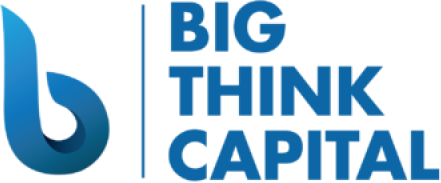Navigating the Changing Landscape of Interest Rates: A Comprehensive Guide for Small Businesses to Leverage SBA Loans, Working Capital Advances, and Equipment Financing amid Rising Inflation
Estimated reading time: 6 minutes
- Stay informed on interest rate trends.
- Leverage SBA products for favorable financing options.
- Cultivate strong relationships with lenders.
- Utilize digital tools for effective cash flow management.
- Be proactive in financing decisions.
Table of Contents
- Understanding the Federal Reserve’s Interest Rate Decisions
- How Inflation Impacts Small Business Loans
- Strategic Utilization of SBA Loans, Working Capital Advances, and Equipment Financing
- Ways to Improve Your Business Credit Score
- Leveraging Lender Relationships and Digital Cash Flow Tools for Financial Resilience
- Key Takeaways for Small Business Owners
- FAQ
Understanding the Federal Reserve’s Interest Rate Decisions
The Federal Reserve plays a crucial role in the U.S. economy, particularly concerning interest rates. The primary tool at their disposal to manage inflation is the adjustment of the federal funds rate. In response to economic conditions, the Federal Reserve may increase interest rates to curb inflation or lower them to stimulate economic activity.
1. Recent Rate Trends
- As of 2025, the Fed has indicated a cautious approach to interest rate adjustments, balancing the need to tackle inflation while supporting economic growth. After several increments throughout 2023 and 2024, rates have stabilized but remain higher than pre-pandemic levels.
- Understanding the market’s reaction to Federal Reserve announcements is vital for small business owners seeking to time their financing strategies properly.
2. Impact on Borrowing Costs
- When the Federal Reserve raises rates, the cost of borrowing also increases. For small businesses, this means higher interest rates on loans and credit lines, which can significantly affect cash flow and profitability.
- Conversely, when rates decrease, it can create a window of opportunity for securing favorable loan terms.
How Inflation Impacts Small Business Loans
Inflation affects the purchasing power of consumers and the costs of goods and services. For small businesses, inflation can lead to both challenges and opportunities concerning financing.
1. Increased Costs of Goods and Services
- With rising prices for materials, the cost of running a business can escalate. This often creates the need for additional working capital to manage day-to-day operations.
- Business owners may face tighter margins as they strive to balance increased costs while maintaining competitive pricing.
2. Higher Loan Rates
- Lenders typically adjust their rates to reflect the risks associated with inflation. As inflation rises, banks may increase interest rates to maintain their profit margins, making it crucial for business owners to secure financing at the right time.
- Understanding your industry’s dynamics can be beneficial for negotiating with lenders, as some sectors may be more resilient during economic fluctuations.
Strategic Utilization of SBA Loans, Working Capital Advances, and Equipment Financing
In today’s economy, it is essential to be strategic in your financing choices. Here, we explore various funding options available to small business owners that mitigate the impacts of high-interest rates and inflation.
SBA Loans
1. Benefits of SBA Loans
- Long repayment terms: SBA loans offer extended repayment periods, reducing monthly payments, which can help ease cash flow issues.
- Lower down payments: The SBA allows small businesses to secure financing without prohibitive capital upfront, making it easier to access essential funds when needed.
2. Navigating the Application Process
- The application process for SBA loans can be rigorous. Ensure you have a well-prepared business plan, financial statements, and credit documentation to streamline this process.
- Working with a knowledgeable broker can expedite your access to funding and help navigate any questions regarding eligibility.
Working Capital Advances
1. Fast Access to Funds
- With a working capital advance, businesses can quickly receive funds based on future sales, making it easier to cover immediate expenses without long waiting periods.
- Typically, these advances do not require extensive documentation, allowing for faster approvals compared to traditional loans.
2. Managing Your Advance Wisely
- Use working capital advances strategically to cover urgent expenses, such as payroll or inventory purchases, to ensure business continuity.
- Create a repayment plan to avoid falling into a cycle of dependency on cash advances, as high repayment costs can accumulate quickly.
Equipment Financing
1. Equipment Leasing vs. Buying
- Leasing equipment can free up cash flow by allowing you to use higher-end machinery without a significant upfront investment.
- Conversely, purchasing equipment may yield long-term savings; understanding your business’s needs and cash flow can guide this decision.
2. Tax Benefits
- Equipment financing can offer tax deductions, particularly through Section 179 deductions, where qualifying equipment purchases may be deducted from taxable income in the year of purchase.
- Consult with a tax advisor to maximize the benefits specific to your situation.
Ways to Improve Your Business Credit Score
A strong credit score is essential for securing favorable loan terms. Here are some practical strategies to enhance your credit profile.
1. Monitor Your Credit Report
- Regularly check your business credit report for inaccuracies and inconsistencies. Correcting errors can improve your score.
- Use services such as Dun & Bradstreet or Experian to keep an eye on your business credit profile.
2. Maintain Responsible Credit Use
- Keep your credit utilization ratio below 30%. This means not using more than 30% of your available credit, which demonstrates responsible borrowing behavior to lenders.
- Pay your bills on time. Timely payments are one of the most significant factors affecting your credit score.
3. Build Strong Relationships with Lenders
- Establish relationships with potential lenders before applying for credit. A strong relationship can lead to more favorable terms and quicker loan approvals.
- Communicate regularly with your lender and be transparent about your business operations and needs.
Leveraging Lender Relationships and Digital Cash Flow Tools for Financial Resilience
In the rapidly shifting economic landscape, maintaining financial resilience is more critical than ever for small businesses. Here are two strategic approaches.
1. Building Relationships with Lenders
- A strong relationship with your lender can provide valuable insights into upcoming trends and financing options that may benefit your business in the future.
- Consider attending local events or networking opportunities that include lenders, as face-to-face interactions can enhance your partnership.
2. Utilizing Digital Cash Flow Tools
- Implement digital tools to manage your cash flow efficiently. Apps and software that track expenses and revenues can provide insights into spending habits and areas for improvement.
- Many platforms offer features that integrate with your bank accounts, simplifying your financial management processes and allowing for real-time evaluations.
Key Takeaways for Small Business Owners
- Stay Informed on Interest Rate Trends: Regularly monitor the Federal Reserve’s announcements and understand how these changes may affect your borrowing options. A proactive approach can help you time your financing decisions better.
- Leverage SBA Products: Take advantage of the benefits of SBA loans. The combination of favorable terms and interest rates makes them an attractive funding option during inflationary periods.
- Cultivate Strong Lender Relationships: Establish and maintain solid relationships with lenders and explore digital tools to enhance your financial management. This proactive approach can help your business remain financially robust through fluctuating economic conditions.
FAQ
1. What are the advantages of SBA loans?
SBA loans offer long repayment terms and lower down payments, making them a valuable option for small businesses during economic uncertainty.
2. How quickly can I access funds through a working capital advance?
Working capital advances provide immediate cash flow based on future sales, allowing for quick access to funds without extensive documentation.
3. How can I improve my business credit score?
Regularly monitor your credit report, maintain responsible credit use, and build strong relationships with lenders to enhance your credit profile.
4. What tools can I use for cash flow management?
Utilizing digital cash flow tools can help manage expenses and revenues efficiently, providing insights for better financial decisions.






